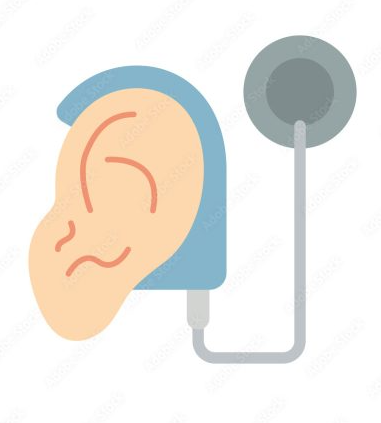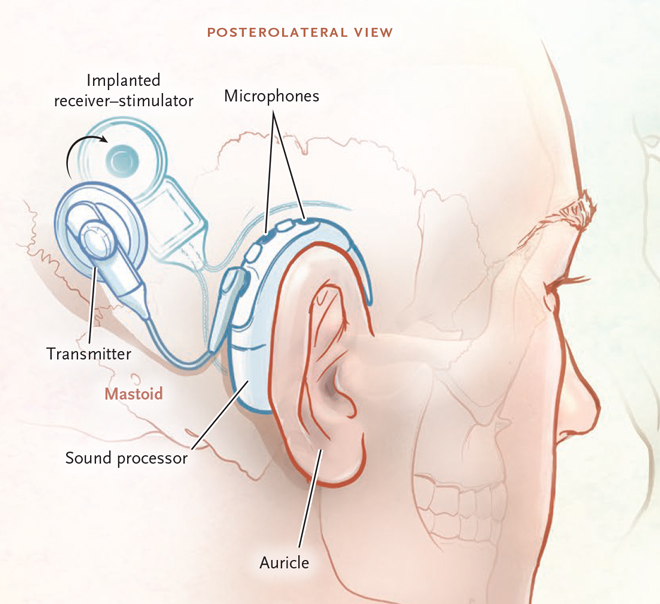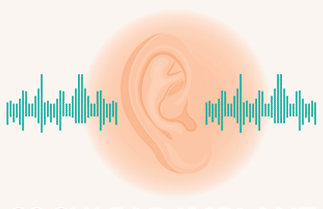Cochlear Implant Rehabilitation - FAQ's
Overview
While the cochlear implant provides access to sound, understanding takes more than just hearing. Intensive individualized habilitation (intervention for patients who have never heard before) and rehabilitation (intervention for patients who are learning to hear again) allows for optimal gains for all recipients. Our rehabilitation team consists of highly trained speech language pathologists and educators of the deaf. A unique rehabilitative and patient-centered focus allows for collaboration among the recipient, family, therapist, doctor, audiologist, and other professionals to establish a path to success. Our multi-disciplinary team shares a commitment to providing a complete network of services to help each of our patients use their cochlear implant(s) to achieve their greatest potential.
Benefits of a Cochlear implant
Rehabilitation for children begins shortly after the implant is activated. The Cochlear Implant Center requires families to commit to a minimum of one year of rehabilitation in order to maximize outcomes. One-hour rehabilitation sessions for children occur on a weekly basis. Rehabilitation for adults begins with an adult rehabilitation consultation. This one-time, 120-minute consultation may be scheduled at any time after the patient acquires at least one month of listening experience with the cochlear implant(s). Individualized needs in the areas of auditory therapy, communication management and the adjustment to an auditory environment are determined. Based upon the results of this functional evaluation, the therapist will recommend a treatment plan for follow-up services, which may occur weekly or as needed.
People with cochlear implants report the following benefits:
- The ability to hear their own voice helping them improve how they pronounce words and the tone of their voice
- Easier communication with friends and family
- The ability to hear the sounds around them for safety and better quality of life
- For babies born with hearing loss or young children with progressive hearing loss, early cochlear implantation provides the opportunity to meet developmental milestones similar to their peers.
Initiating Aural Rehabilitation
Rehabilitation for children begins shortly after the implant is activated. The Cochlear Implant Center requires families to commit to a minimum of one year of rehabilitation in order to maximize outcomes. One-hour rehabilitation sessions for children occur on a weekly basis. Rehabilitation for adults begins with an adult rehabilitation consultation. This one-time, 120-minute consultation may be scheduled at any time after the patient acquires at least one month of listening experience with the cochlear implant(s). Individualized needs in the areas of auditory therapy, communication management and the adjustment to an auditory environment are determined. Based upon the results of this functional evaluation, the therapist will recommend a treatment plan for follow-up services, which may occur weekly or as needed.
Rehabilition Goals and Objectives
Goals and objectives are tailored to meet the unique needs of the pediatric and adult patients. The rehabilitation program systematically develops one’s ability to detect, imitate and associate meaning with the sounds of spoken language. Through a process of specialized strategies, instruction is provided with analysis and feedback to cultivate the emerging auditory system. Our rehabilitation services will provide the necessary guidance to address these individual needs and empower individuals to meet their optimal potential.
Outreach Program
Goals and objectives are tailored to meet the unique needs of the pediatric and adult patients. The rehabilitation program systematically develops one’s ability to detect, imitate and associate meaning with the sounds of spoken language. Through a process of specialized strategies, instruction is provided with analysis and feedback to cultivate the emerging auditory system. Our rehabilitation services will provide the necessary guidance to address these individual needs and empower individuals to meet their optimal potential.


